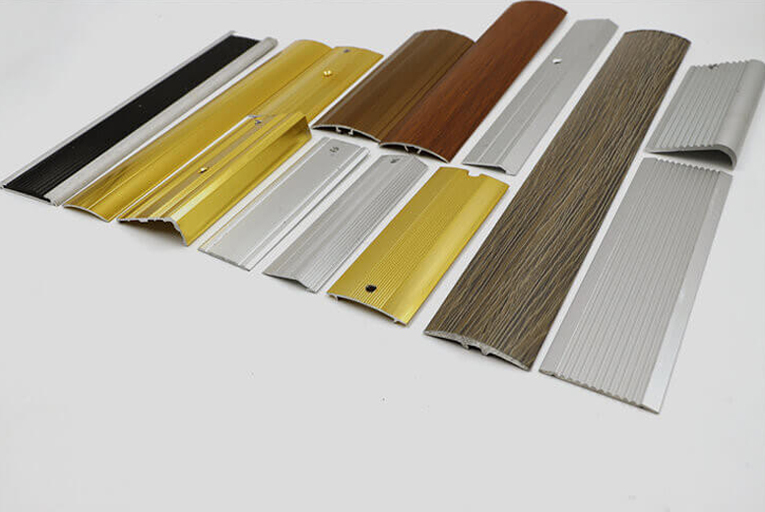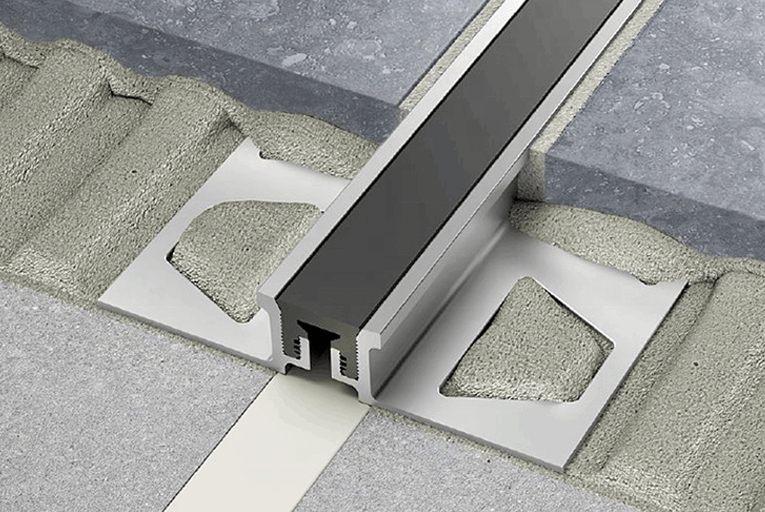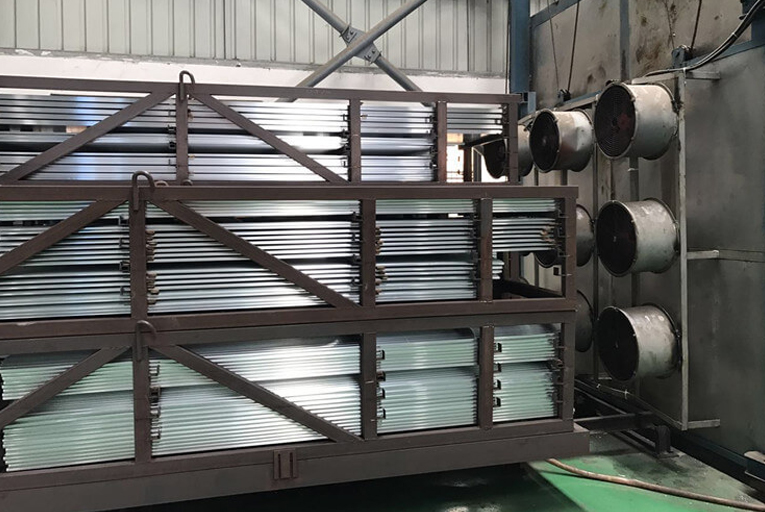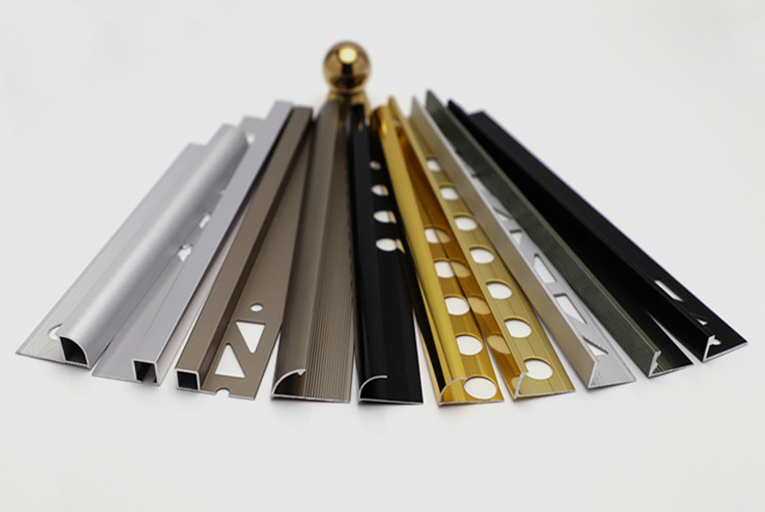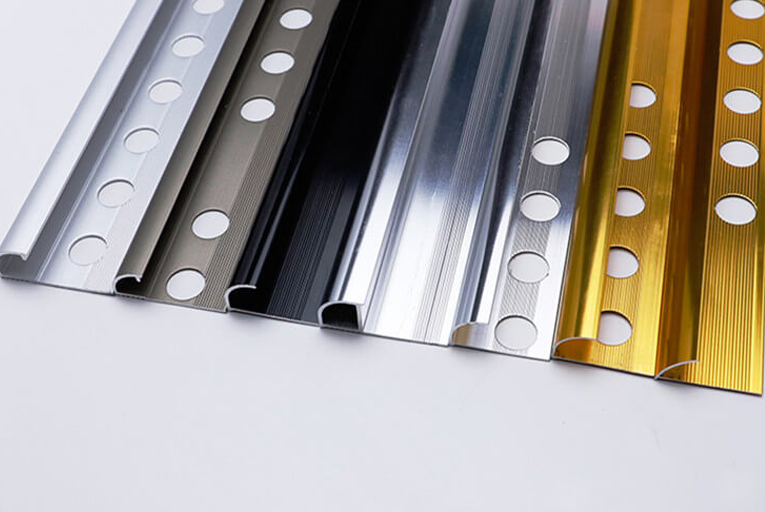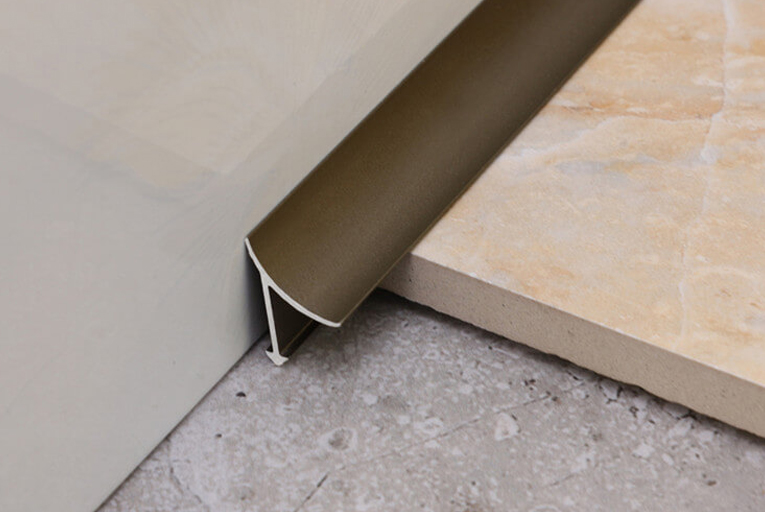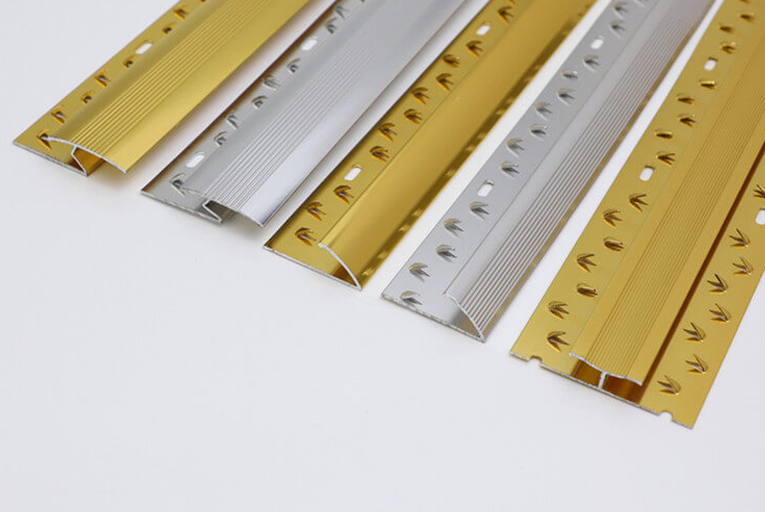Tile Trim: The Perfect Combination of Design and Function
Tile trim, also known as tile edging or tile border, is a material used to finish the exposed edges of tiles on a tiled surface. It not only plays a decorative role, making the edge of the tile look more tidy and smooth, but also improves the durability and practicality of the tile.
In addition to making the tile look better, the benefits of tile trim also include protecting the edge of the tile from being easily damaged. For example, avoid the edges from chipping or cracking due to impact or long-term use. This protection measure can effectively extend the life of the tile.
Tile trim is available in a variety of materials (including metal, plastic, ceramic, and PVC) and comes in different design styles (including modern minimalist, classic elegance, industrial style, and Mediterranean style) to meet a variety of different needs.
In order to ensure a smooth and professional completion of the tile project, we are going to explore the numerous varieties of tile trims in this article, along with their materials, installation methods, usage occasions, design styles, and functional features.
Types of Tile Trim
Now, there are a variety of tile trims in the market, and different types of tile trim can meet different needs and applications, providing diversified solutions for tile projects.
Below, we detail five common tile trims (including corner trims, transition trims, edge trims, floor trims, and wall trims) and their unique features.
1. Corner Trim
Tile corners can be made more attractive and protected with corner trims. First, the design appears neat and simple thanks to the corner trims. Around the edges of the tile, they hide any imperfections or evidence of wear and tear, leaving the surface seeming smoother and more polished.
Second, corner trims protect the corners of the ceramic tiles from harm. Since the corners are visible and prone to wear and impact, adding more corner trims can greatly reduce this damage. The tile trim is usually composed of a durable, long-lasting substance, such as metal or plastic, which helps prolong the life of the tile edges.
2. Transition Trim
In addition to producing a smooth transition between tiles of different materials or colors, transition trims can enhance the tile surface’s overall look and feel.
When installing tiles, you could come across scenarios where they come into contact with other flooring materials (such as carpet, hardwood floors, or other tiles) or with tiles of various types, like the transition between marble and ceramic tiles.
By joining these tiles of various colors or materials, transition trims can prevent abrupt or incongruous material transitions and produce a smooth, organic transition look. They also help to enhance the general appearance of the tile surface.
3. Edge Trim
Tile edges are dressed and shielded by edge trim, which stops edge wear and damage. Because ceramic tiles are often exposed to outside forces like friction and contact, their edges are vulnerable to wear and deterioration over time. The use of edge trim is an effective way to address these problems.
Typically made of metal, plastic, or other durable materials, edge trim provides a strong but stylish alternative. They alter the appearance of the edge and give it a neater, more organized look while also serving as a protective barrier to extend the tile’s useful life.
4. Floor Trim
Decorative strips made specifically for the borders of floor tiles are called floor trims. Its main goal is to make floor tiles more aesthetically pleasing and functional overall, giving the floor a more tidy and orderly appearance.
Floor trims have the potential to improve the overall aesthetic appeal of floor tiles. By hiding the margins of floor tiles, they prevent crowded, unsightly tile edges and give the floor a tidy, organized appearance. Moreover, floor trims can also enhance the usefulness of floor tiles. They protect the floor tile edges from damage in addition to adding beauty to the floor.
5. Wall Trim
Wall trims are ornamental strips made especially for tile walls. Their primary purpose is to draw attention to the wall design effect. Wall trims can be utilized for a variety of purposes, such as border creation, decorative edge creation, and other wall features that give your walls a distinctive look and creative flair.
Additionally, wall trims are available in a variety of styles and finishes to match different tile designs and wall colors. You can choose wall trims according to your preferences and needs.
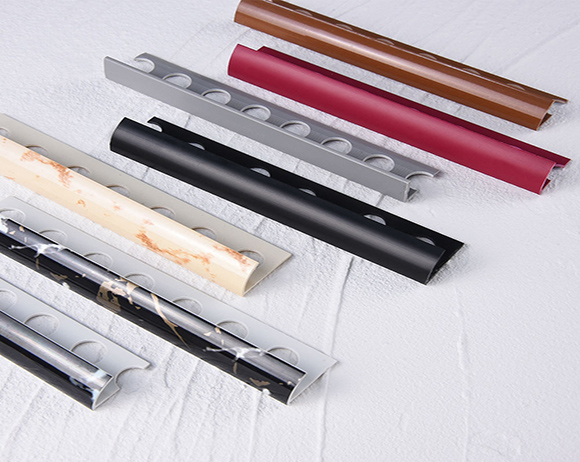
Materials Used in Tile Trim
Different materials not only give tile trims different appearances and styles, but also have their own unique characteristics and applicable scenarios. We will introduce several common tile trim materials and their characteristics to help you better choose the tile trim that suits your needs.
Metal Material
One material that is frequently used for tile trims is metal. Stainless steel and aluminum are common metal materials. Metal tile trims are sleek and long-lasting, they can withstand environmental changes and remain in good condition for an extended time.
Stainless steel tile trims are often used in high-end decorative projects, and the overall decorative impression can be improved by their shine and texture. Because they are lighter, aluminum tile trims are appropriate for situations where a greater weight requirement is necessary, such as wall decoration.
Plastic Material
Because plastic tile trims are inexpensive and lightweight, they are becoming a more popular option for decorating jobs. Richly colored plastic tile trims come in a variety of forms to accommodate various decorating styles and expand the options and potential of decor projects.
Plastic materials have good plasticity and can be made into various shapes and patterns, which can increase the decorative effect. Because of this, plastic tile trims have a certain degree of flexibility in decoration and can be used to achieve a variety of creative diverse decorative effects.
However, plastic tile trim is less durable than metal. Plastic materials are easily distorted or harmed by outside forces, particularly in situations with high temperatures or pressure. Thus, to guarantee the decorative effect and service life of the plastic tile trims, you need to make rational choices based on the particular decor environment.
Ceramic Material
Because ceramic tile trims and ceramic tiles are made of the same material, they can be easily matched and the overall decorative style can be maintained. Selecting tile trims made of the same material as the wall or floor tiles during the decorating process can improve the coherence of the finished look.
At the same time, ceramic tile trims are highly resistant to wear and strain, which helps shield ceramic tile edges from outside harm and extend their service life.
PVC Material
When it comes to decorating ceramic tiles, PVC tile trims offer distinct benefits. They work particularly well in areas like kitchens and bathrooms where waterproofing is necessary. Because PVC material is waterproof, it can effectively keep moisture from seeping into the margins of ceramic tiles, preventing wear and damage to those edges.
PVC tile trims are durable and lightweight as well. PVC materials are easier to work with, lighter, and quicker to install than metal tile trims. In addition, PVC material is extremely durable, resistant to environmental changes, and able to hold its excellent looks and functionality for an extended time.
Furthermore, the PVC tile trims have a certain degree of elasticity. As a result, there will be less breaking and damage to the tile edge trim due to its improved ability to adjust to variations in the wall and floor, such as variations in temperature or slight deformations of the floor. The decorative strip’s application cycle is extended and its service life is increased by its elastic property.
Installation Locations of Tile Trim
When installing tile trims, you need to choose the appropriate installation location according to the actual situation and pay attention to some details to ensure the decorative effect and service life. Next, we will introduce the common installation locations and precautions for tile trims.
Inside Corner
One of the most popular places to install tile trims is the inner corner of the ceramic tile, which is referred to as the inner corner position. To prevent gaps or unevenness, you need to make sure that the tile trims fit tightly against the ceramic tiles while placing them at the inner corners.
In addition, selecting the appropriate tile trim size and shape is also very important. The shape of the tile trim should match the edge of the tile, and you can choose a right-angled shape or a rounded shape to adapt to different styles of decoration needs.
Outside Corner
The outer corner position refers to the outer corner of the ceramic tile, and is also one of the common installation locations for tile trims. When installing the tile trims at the outer corners, you also need to pay attention to the fit between the tile trims and the ceramic tiles to avoid gaps or unevenness.
To guarantee a long service life, the tile trimmings at the outside corners should also be made of materials that are resistant to wear and corrosion. Stainless steel and aluminum are common wear-resistant materials that are appropriate for outside corner decorating because of their modern feel and good durability.
Horizontal Surface
The horizontal surface position refers to the tile trims tiled at the intersection of horizontal surface tiles. When installing tile trims on a horizontal plane, you need to pay attention to the flatness and height consistency between the tile trims and the ceramic tiles to avoid uneven heights.
The tile trims on the horizontal surface should be made of non-slip and wear-resistant materials to ensure safe use. Common anti-slip materials include metal and plastic, which have good durability and anti-slip properties and are suitable for decoration on horizontal surfaces.
In addition, it’s important to properly install tile trims on horizontal surfaces to prevent any potential safety issues resulting from loosening or deforming of the trim. To guarantee that the tile trims are securely fastened to the ceramic tile surface during installation, pay close attention to the fixing method.
Vertical Surface
The vertical surface position refers to the tile trim used at the vertical joints of the wall. To prevent skew or unevenness, you need to be mindful of the wall’s flatness and verticality when putting tile trims on vertical surfaces.
To ensure a long service life, the tile trims on the vertical surface should be made of materials that are both waterproof and durable. PVC and stainless steel are common waterproof materials that are appropriate for wall decoration at vertical joints because of their good waterproof qualities.
You can use tools like a level to make sure the tile trims are installed vertically when they are on vertical surfaces. Also, choose appropriate fixing methods to ensure that the tile trim is securely attached to the wall.
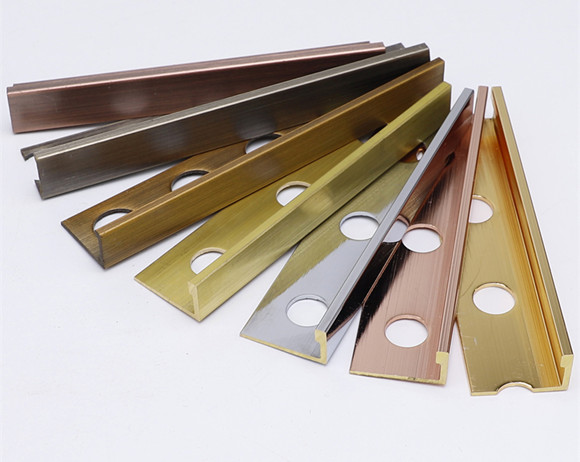
Multiple Uses of Tile Trim
Tile Trim is a decorative material widely used in various occasions. It can not only beautify the edges of ceramic tiles, but also protect them from damage. Below we will introduce the application of tile trim in various occasions such as residential, commercial, and outdoor.
Residential Occasions
Tile trim is frequently used in kitchens at homes to decorate and shield the edges of wall tiles. Because of its waterproof qualities, ceramic tiles can withstand a longer service life and be shielded from corrosion by water vapor. At the same time, the elegant appearance of tile trim can also improve the overall design of the kitchen.
Tile trim in the bathroom can not only make the borders of the wall and floor tiles seem beautiful, but it can also keep water vapor from seeping into the tile and breaking or falling off the tile. Selecting tile trim with good waterproof performance can enhance the aesthetics and comfort of the bathroom while successfully protecting the tiles.
In the living room, tile trim can be used to decorate the edges of floor tiles, producing a tidy and well-organized decorative impression. At the same time, you can improve the living room’s decorative style by selecting tile trim whose color and material complement the floor tiles.
Commercial Occasions
In hotel lobbies, guest rooms, and other places, tile trim is often used to decorate and protect the edges of floor and wall tiles. Not only can high-quality tile trim prolong the service life of floor tiles and lower maintenance expenses, but it can also enhance the hotel’s decor.
In shopping mall corridors, stores and other areas, the borders of floor and wall tiles are frequently decorated and shielded by tile trim. Choosing tile trim with bright colors and unique shapes can attract customers’ attention and enhance the overall atmosphere of the mall.
In office conference rooms, corridors and other places, tile trim is frequently used to decorate and protect the edges of floor and wall tiles. The service life of office tiles can be extended and the comfort level of the workspace can be raised by selecting tile trim that is resistant and durable.
Outdoor Occasions
Decoration and protection of outdoor places are equally important, and tile trim is also widely used in outdoor applications. Among them, balconies and swimming pool edges are two common outdoor places.
On balconies, tile trim can be used to decorate and shield the edges of wall and floor tiles. Selecting tile trim that is resistant to weathering will help prolong the service life of balcony tiles by preventing wind and rain from corroding them.
Tile trim can also improve the overall decorative effect and beautify the edge lines of the floor tiles at the swimming pool’s edge. At the same time, selecting tile trim that is anti-slip and resistant to wear can improve the edge of the swimming pool’s safety and comfort.
Tile Trim Design Styles
Tile trim is a decorative and protective element that comes in a range of design styles for the edges of tiles. Below, we will introduce four common tile trim design styles: modern minimalist, classic elegance, industrial style, and Mediterranean style, and discuss their application in decoration.
Modern Minimalist
The tile trim in the modern minimalist style is ideal for modern style design as it emphasizes clear, vibrant lines and shapes. In order to represent a straightforward and contemporary design concept, this type of tile trim typically consists of smooth curves, simple geometric shapes, or straight lines without a lot of decoration.
When choosing colors, modern minimalist style tile trim usually chooses neutral tones, such as white, gray or black, to coordinate with the modern minimalist decoration style.
The modern minimalist style tile trim is suitable for various occasions, particularly for individuals who want a straightforward and bright design aesthetic. It can be combined with modern ceramic tiles to produce a simple and stylish decoration effect.
Classic Elegance
The tile trim in the classic elegance style incorporates traditional or retro decor styles while concentrating on intricate patterns and decorations. Gorgeous patterns, carvings, or decorative elements are frequently used in tile trim in this design style to demonstrate elegance and grace.
Classic elegance tile trim typically chooses warm colors such as gold, silver, or bronze to complement traditional or retro-style decoration.
Tile trim in the classic elegance style is appropriate for people who enjoy traditional and refined decorating styles. To produce a traditional and refined design impression, it can be combined with retro-style ceramic tiles.
Industrial Style
Typically made of metal, industrial style tile trim has a straightforward, raw appearance that fits well with industrial style decor. Simple lines and geometric shapes are frequently used in this tile trim design style to highlight rough and solid qualities.
Iron gray, black, copper, and other colors that go well with industrial style decoration are popular choices for industrial style tile trim.
Industrial style tile trim is suitable for those who like simple and rugged decoration style. It can be paired with industrial-style tiles to create a simple, sturdy finish.
Mediterranean Style
Mediterranean style tile trim usually uses fresh and bright colors such as blue and white to create a relaxed and pleasant seaside feeling. This design style’s tile trim frequently incorporates wavy lines or marine patterns to convey a relaxed and natural feel.
Colors that go well with Mediterranean style decoration, such as blue, white, or green, are frequently used for tile trim in this design.
Mediterranean style tile trim is suitable for those who like the seaside and relaxed decoration style. It can have a clean and natural appearance when used with tiles in the Mediterranean style.

Functional Features of Tile Trim
In addition to playing a decorative role, tile trim also has a variety of functional features, providing protection and beautification for the edges of tiles, while also improving the overall decoration effect. Below, we will introduce in detail the functional characteristics of tile trim and its role in decoration.
Water and Moisture Resistance
Tile trim works well in humid areas like bathrooms because of its exceptional water resistance. In ceramic tile paving, the bathroom is a place prone to moisture. The edges of the ceramic tiles easily absorb water, causing the ceramic tiles to become moldy and discolored, affecting their appearance.
Installing tile trim can efficiently stop moisture from penetrating the tile, keep the tile edges dry, and increase the tile’s service life. Moreover, tile trim helps keep the bathroom atmosphere sanitary and clean by keeping water vapor from penetrating the tile’s edge and preventing the space between the tile and the wall from growing bacteria.
It is advised to use materials with good waterproof qualities, like PVC tile trim, when selecting tile trim. This will help to guarantee that the edges of the tiles stay attractive and long-lasting while also better resisting the influence of moisture in the bathroom environment.
Wear and Scratch Resistance
Tile trim has wear-resistant and scratch-resistant properties, which can improve the durability of the tile edges and prevent wear and tear. In daily use, the edges of ceramic tiles are easily rubbed and scratched, affecting their appearance. The installation of tile trim can effectively protect the edges of tiles, and improve their wear resistance.
Installing tile trim can effectively protect the edges of the tiles, decrease wear and tear, and increase their service life, especially in high-traffic areas like corridors, doorways, and other places that are prone to wear and tear.
When choosing tile trim, it is recommended to choose a material with good wear resistance, such as metal or high-strength plastic, to ensure that the edges of the tiles remain beautiful and durable for a long time.
Aesthetic Enhancement
The excellent design of tile trim, together with its various color and pattern combinations, can accentuate the decorating effect and add to the overall beauty of tile paving. Tile trim can be used to modify the edges of the tiles as well as provide decoration and refinement to the entire area.
Tile trims come in a variety of colors and patterns that you can match to your decor style and personal tastes to create a one-of-a-kind decorative effect. For instance, you can match basic and bright ceramic tiles with tile trim that features geometric designs and straight lines to create a modern and minimalist decoration effect.
Easy Installation
Typically, all that is needed to install tile trim is a few basic tools and installation knowledge. First, use the proper glue or adhesive to bind the tile trim to the tile edge after trimming or cutting it to the necessary size. To prevent gaps or unevenness, you need to make sure the tile trim fits tightly on the tile edge while fixing. Lastly, to further secure the tile trim in place, lightly tap with a rubber mallet.
The tile trim installation process is so easy to understand that even inexperienced DIY enthusiasts can handle it with ease. This not only saves installation costs, but also improves decoration efficiency and shortens the construction period. Therefore, the ease of installation of tile trim has become one of the reasons for its popularity.
Conclusion
To sum up, tile trim offers both functional and decorative advantages, making it a crucial element of tile installation. In addition to adding to the surface beauty of the ceramic tile, tile trim can also protect the tiles and increase their service life.
In tile projects, tile trim finishes the edges of the tiles and keeps them safe from damage, contributing to a neat and polished finish. It can cover the spaces between the tiles as well as modify the tile edges, giving the overall paving a more polished and attractive appearance.
You can choose tile trims based on your own preferences and decorating style, whether they are made of PVC, ceramic, metal, or plastic. Tile trim designs are also incredibly versatile and varied at the same time. They can add additional design elements to the ceramic tile paving by creating distinctive decorative effects based on various needs and space designs.
With a variety of types, materials, and design options available, tile trim offers endless possibilities for enhancing the design of tile surfaces.
-
The 6 Hottest Tile Trim Solutions for 2021
2022-02-09 -
How to Install Tile Trims Line?
2022-02-09 -
Difference Between Sandblasting and Anodizing Surface Treatment of Aluminum Tile Trim
2022-02-09 -
The Different Uses of Tile Outside Corner Edging Trim and Inside Corner Edging Trim
2022-02-09 -
The Most Popular 5 Different Materials of Tile Trim Line
2022-02-09 -
What is Carpet Cover Trim?
2022-02-09

